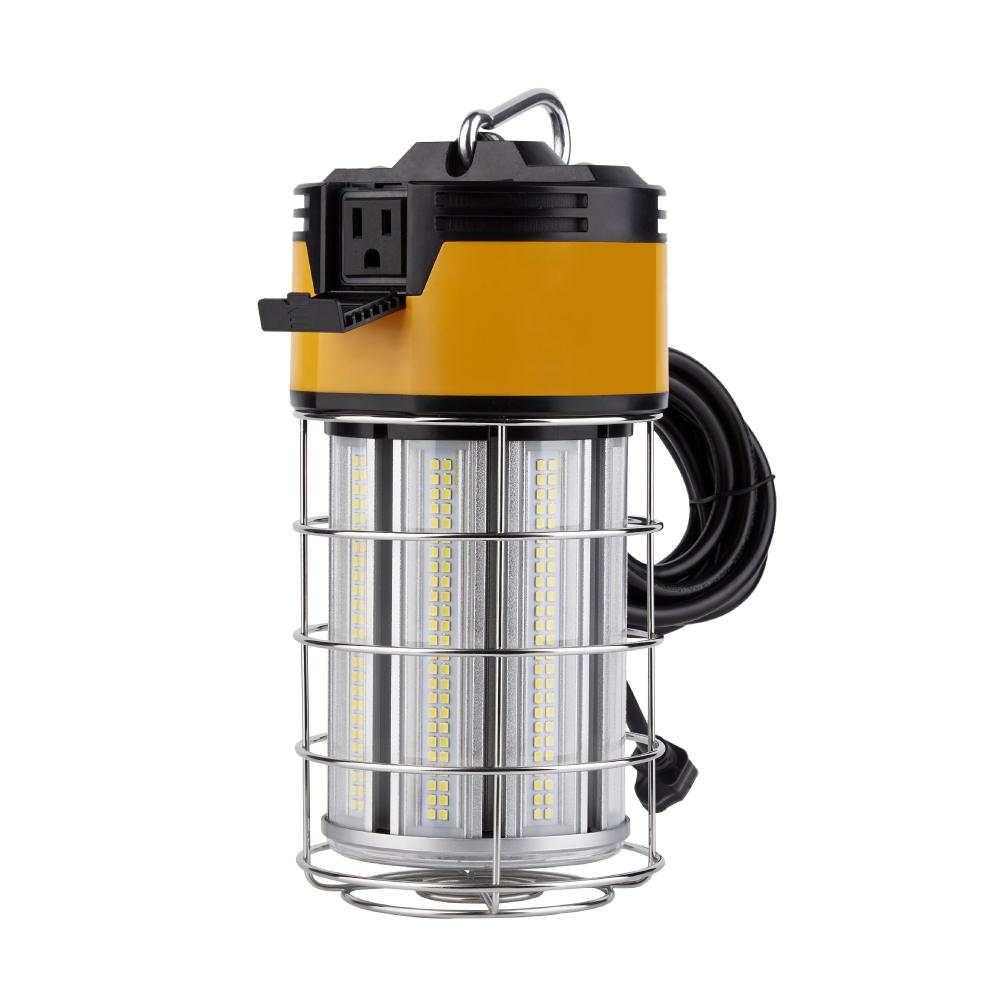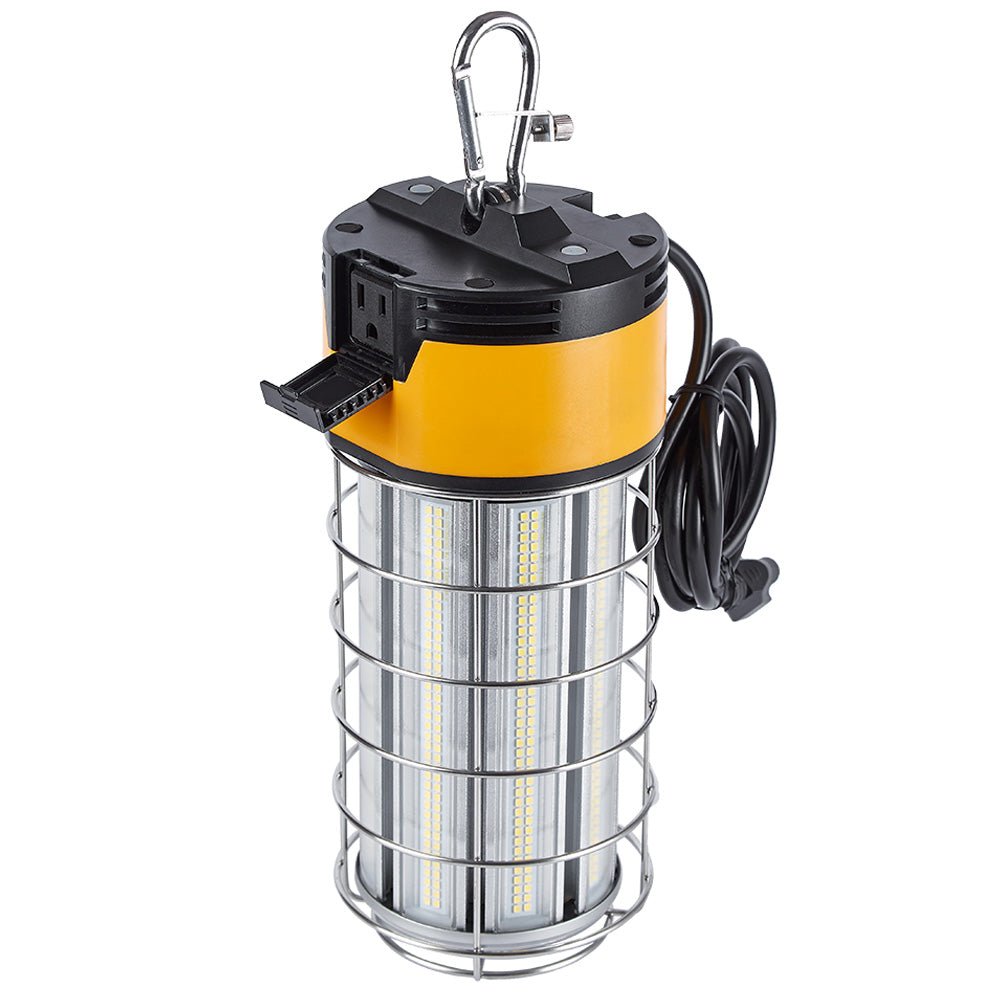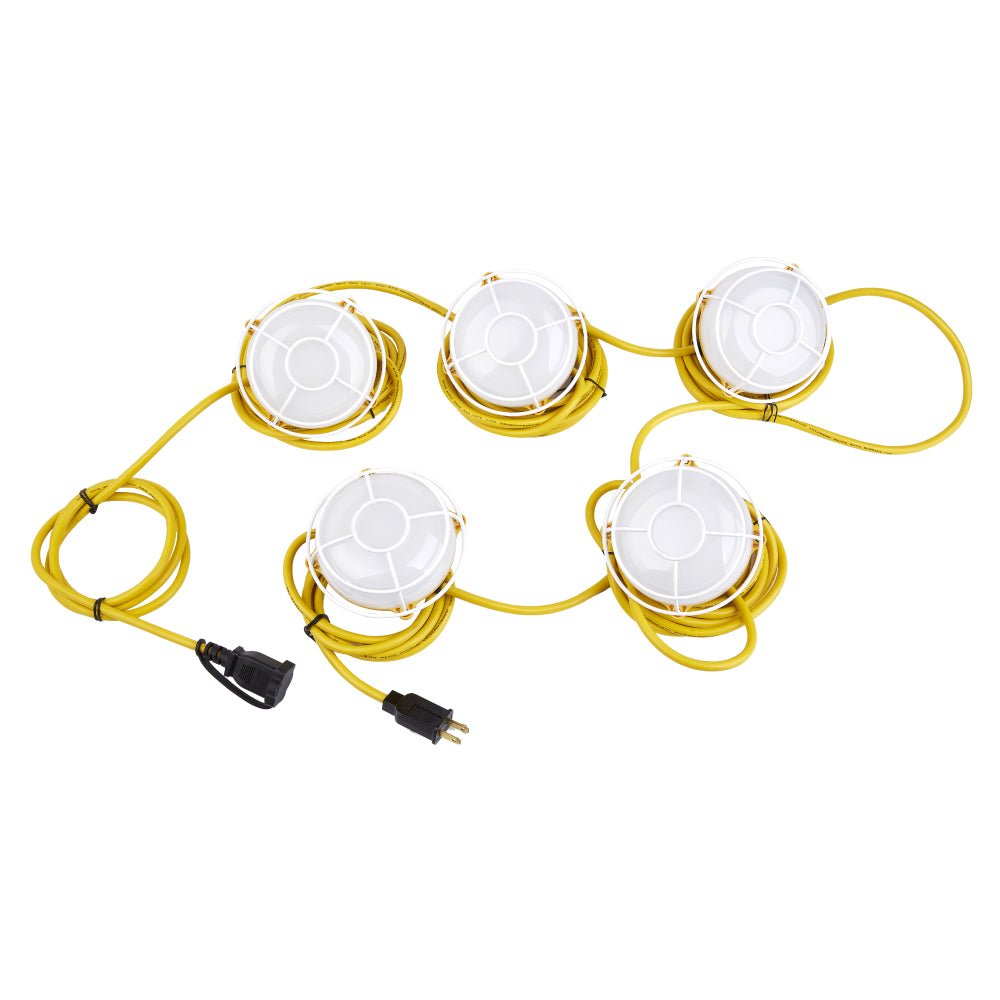In the construction industry, proper lighting is crucial to ensure safety and productivity on the job site. Traditional lighting solutions can be expensive and inefficient. That's where LED Work Lights come into play, offering a range of benefits that make them the preferred choice for contractors. In this comprehensive guide, we will explore LED temporary work lights with cages and LED string work lights with cages, helping you make an informed decision about the best lighting solution for your construction needs.
Table of Contents
- Introduction
- Understanding the Importance of Lighting in Construction
- LED Temporary Work Lights with Cage
- 3.1 Specifications
- 3.2 Benefits
- 3.3 Applications
- LED String Work Lights With Cage
- 4.1 Specifications
- 4.2 Benefits
- 4.3 Applications
- Comparing LED Work Lights with Traditional Lighting
- Advantages of LED Work Lights for Contractors
- Factors to Consider When Choosing LED Work Lights
- 7.1 Brightness and Lumens
- 7.2 Durability and IP Rating
- 7.3 Portability and Ease of Installation
- Linkable LED Work Lights
- LED Work Lights for Specific Job Sites
- Maintenance and Longevity
- Cost-Efficiency of LED Work Lights
- Environmental Benefits
- Conclusion
- FAQs (Frequently Asked Questions)
Introduction
When it comes to construction, having the right tools and equipment is essential. Among these tools, lighting is often underestimated but is equally important. LED work lights have gained popularity among contractors due to their efficiency, durability, and versatility. In this article, we will explore two types of LED work lights that are highly suitable for contractors: LED temporary work lights with cages and LED string work lights with cages.
Understanding the Importance of Lighting in Construction
Before diving into the specifics of LED work lights, it's crucial to understand why proper lighting is vital in construction. Construction projects often involve working in dimly lit or remote areas. Inadequate lighting can lead to accidents, delays, and decreased productivity. Proper illumination ensures that workers can operate safely and efficiently, even during nighttime or in poorly lit conditions.
LED Temporary Work Lights with Cage
3.1 Specifications
LED temporary work lights with cages are powerful lighting solutions designed to withstand the rigors of construction sites. They typically come in 150W and 100W variants, providing 18000LM and 12000LM of brightness, respectively. These lights are plug-and-play, making installation a breeze. With a color temperature of 5000K, they offer clear and bright illumination.
3.2 Benefits
- Durability: LED temporary work lights are built to last. They are resistant to impact and vibration, ensuring they can endure the demands of a construction site.
- Energy Efficiency: These lights consume less energy compared to traditional lighting options, resulting in cost savings.
- Linkable: You can easily connect multiple lights to cover a larger area efficiently.
3.3 Applications
LED temporary work lights are ideal for various construction tasks, including building construction, roadwork, and renovations. They are suitable for indoor and outdoor use, making them versatile lighting solutions.
LED String Work Lights With Cage
4.1 Specifications
LED string work lights with cages are designed for flexibility. They come in 65W variants and provide 8000LM of brightness. These lights have an IP65 rating, ensuring they are dust and water-resistant. Each string consists of 5 lights, and they are linkable for convenience.
4.2 Benefits
- Versatility: LED string work lights are perfect for temporary lighting setups. They can be hung or strung along scaffolding, making them adaptable to different job site layouts.
- Energy-Efficient: Like their temporary counterparts, these lights are energy-efficient, reducing operational costs.
- Weatherproof: Their IP65 rating means they can withstand challenging weather conditions.
4.3 Applications
LED string work lights are excellent for construction sites, renovation projects, mining operations, and even as hanging string lights for special events. Their flexibility and weather resistance make them a valuable addition to any job site.

Comparing LED Work Lights with Traditional Lighting
Now that we've explored the specifications and benefits of LED work lights, let's compare them to traditional lighting options commonly used in construction.
Conclusion
In conclusion, the choice of lighting for contractors is clear: LED work lights outshine traditional lighting solutions in terms of efficiency, durability, and cost-effectiveness. Whether you opt for LED temporary work lights with cages or LED string work lights with cages, you're making an investment in safety and productivity on your construction site.
FAQs (Frequently Asked Questions)
-
Are LED work lights suitable for outdoor use?
- Yes, LED work lights are designed to withstand outdoor conditions and can be used for both indoor and outdoor applications.
-
How do I install linkable LED work lights?
- Installing linkable LED work lights is straightforward. You can daisy-chain them by connecting one light to another using the provided connectors.
-
What is the lifespan of LED work lights?
- LED work lights typically have a lifespan of 50,000 hours or more, ensuring long-term reliability.
-
Do LED work lights require any maintenance?
- LED work lights are low-maintenance. Regular cleaning of the fixtures and checking for loose connections is usually sufficient.
-
Are LED work lights environmentally friendly?
- Yes, LED work lights are eco-friendly as they consume less energy and have a smaller carbon footprint compared to traditional lighting options.


















































































